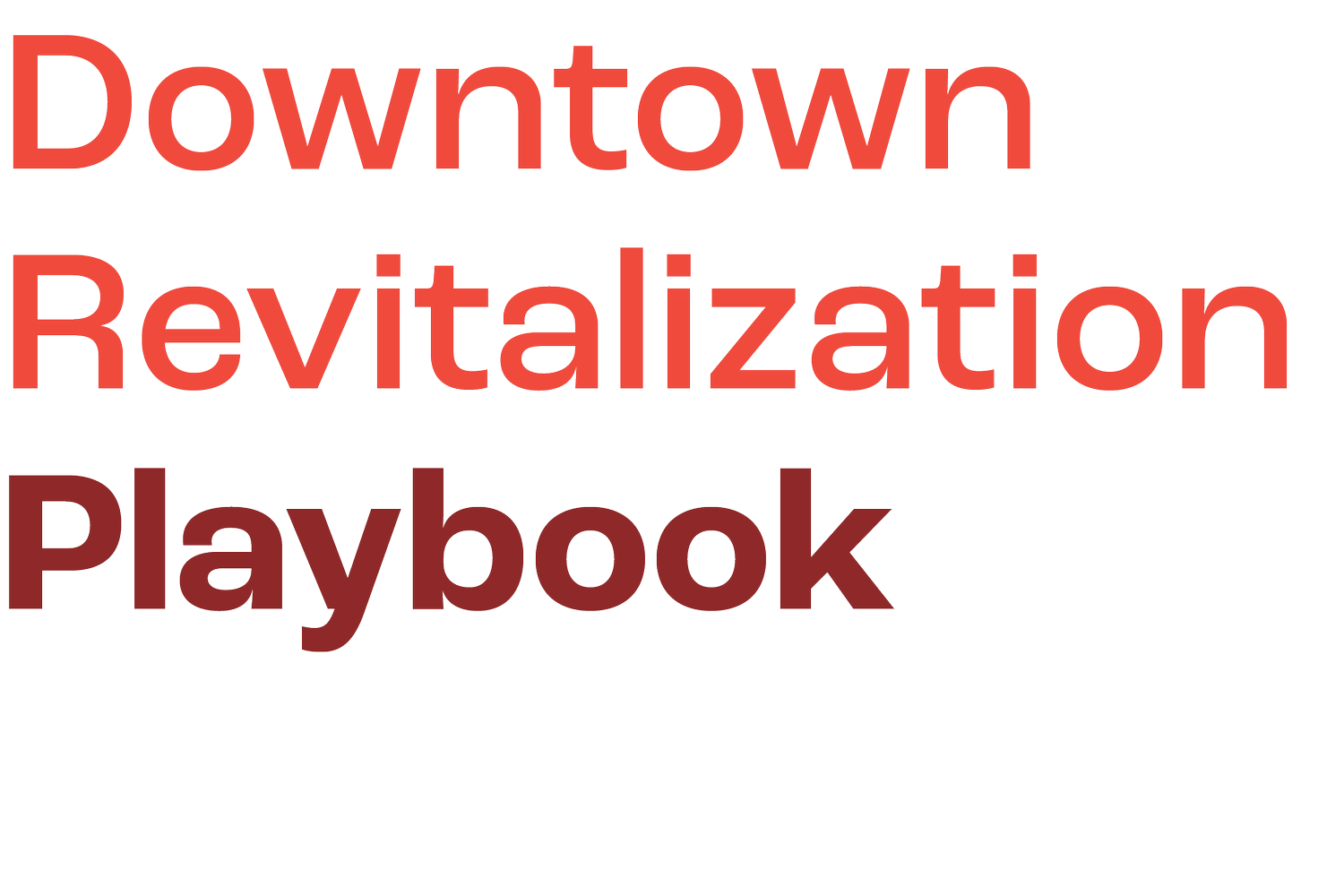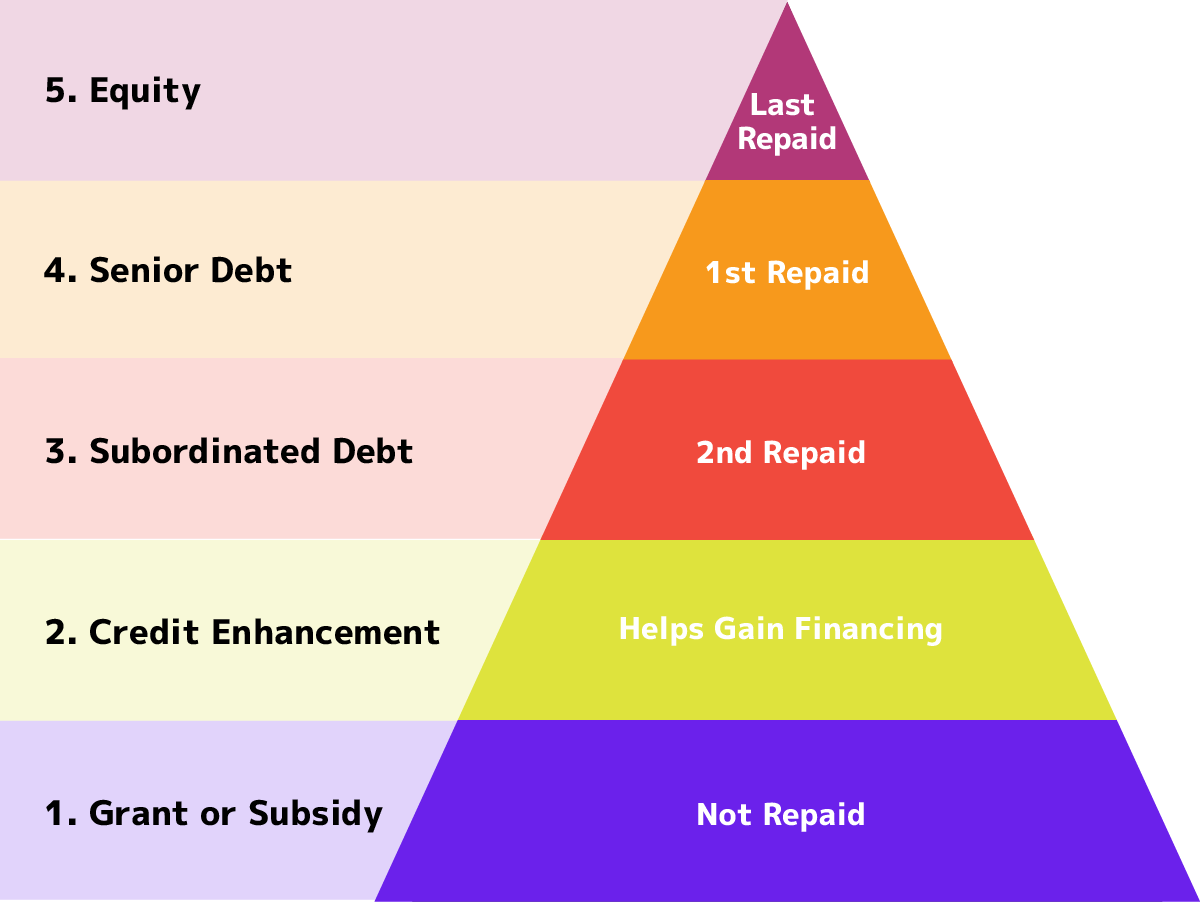
Understand the Capital Stack & Spectrum of Financial Return
This section introduces a way of thinking about strategies for investors to gain their desired return-on-investment while at the same time addressing how community stakeholders can creatively assemble a mix of those same strategies in terms of their status as both repayable and non-repayable types of investment.
The full package of investment for a particular project can be represented visually as a geometric diagram called a capital stack. This graphic makes it easier to conceptualize and talk about the total package of different kinds of investment that must fit together well to fund and finance a single project or even a series of related projects.
As we consider how to interpret a capital stack, keep in mind that the terms “fund” and “funding” both refer to money that does not need to be paid back, whereas the terms “finance” and “financing” are money that will be expected to be paid back. Even so, investors who provide funding often expect a social return on investment, while those who offer financing typically require a financial return on investment that is greater than the original amount of money they provided.
Now let’s examine the potential components (i.e., layers) of a capital stack, which often is represented visually in a pyramid diagram that illustrates the overall set of investment deals that have been put together to fund or finance a specific project. Not all of these layers will appear in every project, but it’s important to recognize each type as a potential source of capital during any stage of a project.
Capital Stack
Grant or Subsidy
In the capital stack, Grant or Subsidy layers at the bottom do not require repayment. Many towns in Appalachia try to fund entire projects with only grants and other types of non-repayable funding, but large projects often cost more than those types of investments can provide. Projects that rely only on this type of funding may be waiting forever. Learn more.
Credit Enhancement
A Credit Enhancement may be needed to gain financing. Since lenders and investors higher on the capital stack seek a financial return, those without a history of gaining financial returns can seek a Credit Enhancement to reduce the perceived risk for investors. By reducing the risk, Credit Enhancements make investors more interested in a project they would not typically finance. Credit Enhancements are especially important for innovative projects without a history of success in the current market. Learn more.
Subordinated Debt
The third layer is Subordinated Debt, which is patient capital. This could be a forgivable loan or another type of funding or financing that can be repaid slowly. Layers of the capital stack near the middle and top have increasingly more risk and may require the investors to be patient to receive their financial returns. Learn more.
Senior Debt
Fourth is Senior Debt. This is often conventional debt like a mortgage or a loan where an investor gives a certain amount of money in exchange for payments made at regular intervals with interest. They often expect a market-rate return on investment and are the first to be repaid. Learn more.
Equity
Equity investments are on top. Rather than expecting a steady return that is capped at a certain amount like Senior Debt investors, they become a partial owner and share in the overall profits and value of the building or business. This means they have the most to lose if the investment fails or could have the biggest rate of financial return if it succeeds. This is why it is so important for the core team to make a solid Pro Forma and perform their due diligence when researching and planning, so they can present a compelling case to these debt and equity investors and assure them of the likelihood of a good return on their investment. Since equity investors may have partial control of the direction a company takes (depending on how the legal agreement is arranged), it is important to share similar values. Learn more.
Understand the Investors
It’s important to know all the investors, including what motivates them and their expectations. The Center for Community Investment explains how every type of investor has a different expectation for their risk and return. Logically, investors who risk more expect a greater return. CCI illustrates this with the “Spectrum of Financial Return.”
Spectrum of Return
Investors closer to the left value impact the greatest, while investors closer to the right value financial return. Typically:
Foundations, CDFIs and Government Agencies:
These investors value social impact and therefore are more likely to provide a grant, forgivable or interest-free loans in exchange for impressive and realistic social outcomes.
CDFIs, Foundations, Banks, and Impact Investors:
Some investors who are interested in a financial return may be willing to sacrifice some of that return if there is also a promised social impact that aligns with their mission. In this case, a bank or other mission-centered investor may be willing to accept a “sub-market return” on their investment such as a low-interest rate, in exchange for estimating a social impact that supports their mission.
Banks & Other Debt-based Investors:
Those who lend at full market rate will be seeking investments that show lucrative revenue projections. This also means they may be less likely to invest in a project that seems risky. The borrower will need to provide collateral to secure the loan. It may be possible to lower the interest rate by attaching credit enhancements to the loan.
Venture Capitalists & Equity Investors:
Private equity refers to illiquid equity investments in existing, private companies with growth potential; venture capital is private equity focused specifically on new and start-up businesses. Equity investors own a share of the business and reap their return when they exit the business.
When evaluating which types of investors to approach, it is helpful to ask:
Expectations: What are they interested in gaining from an investment?
Risk Tolerance: How much risk are they willing to tolerate?
Approach Strategy: What is the best strategy to request an investment from them? And how much might they be willing to invest?


